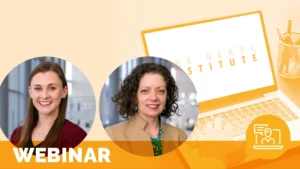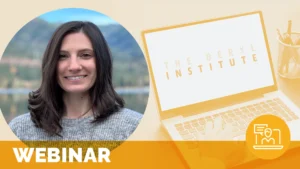Weaving an Effective Patient Experience Strategy

On the Road with Rush University Medical Center – January 2011
by Jason A. Wolf
In keeping tradition with our On the Road feature, both in time and distance, the journey this month led me to Rush University Medical Center in Chicago on an otherwise snowy and blustery Midwest day, I found myself immediately welcomed by the warmth of Rush. I was taken aback upon my arrival by the small city of buildings, built across the decades, yet linked together seamlessly by numerous bridges, walkways and tunnels. Little did I know that this first view of Rush would not only exemplify its long and storied history as a 170-year-old healthcare institution, but also serve as a visual metaphor for their expanding patient experience effort.
During my visit, I was provided a broad view of the emerging efforts at Rush. My journey took me from the front lines of nursing and environmental services to the behind-the-scenes, yet critical, efforts of the call center. The story that unfolded is one I know challenges numerous healthcare organizations – how to manage various and storied cultural and institutional segments while building a unified voice of the institution. The efforts at Rush University Medical Center exemplified the road many organizations are facing in the new experience marketplace, that of turning many voices into one.
The Foundations of an Effective Patient Experience
Over the span of my two days at Rush, one message emerged very clearly: This institution, with its rich history, recognized the delicate balance it played every day in managing its “collection of cultures,” as described by Brian Smith, Vice President of Medical Affairs, Executive Director of Rush University Medical Group, Assistant Professor, Department of Health Systems Management Rush University and Co-Chair of Rush’s Patient Experience Steering Group. Every individual with whom I spoke mentioned the need at Rush to recognize the patchwork of cultures represented in the institution in conjunction with the endeavors underway to begin building a unified effort. This relationship requires a collaborative effort and an integrated approach to address the patient experience, while honoring the traditions of the institution.
Recognizing the importance of patient experience is not new at Rush. It has been a central philosophy for Rush CEO Dr. Larry Goodman, who began the journey of service with a focus on reframing the overall culture of the organization. Julie Benesh, Director of Employee and Organizational Development, reinforced that the effort towards a focus on the patient experience started with getting alignment and clarity on the mission, vision and values of the organization. That foundation provided a readiness to focus on service and underpin Dr. Goodman’s belief that everyone in the organization was part of patient care. As Benesh expressed, Rush moved to a place where they could be explicit in saying patients were everybody’s business.
Benesh reinforced what Brian Smith introduced, that the unique conglomeration of cultures required an intentionally balanced approach to how patient experience was addressed. Any successful effort at Rush was going to require a foundation of tenets that represent the importance of service excellence, while allowing for a customized adaptation of the concepts. This idea of individualized consistency has taken root at the foundation of Rush’s patient experience success. It is a strong representation of the organization’s recognition of its rich heritage and its needs to collectively address patient issues. At the same time, it required the team at Rush to find the right balance of resources, processes and tools that would support success.
This was an encouraging discovery because many organizations are apt to buy into one model or another and apply it without consideration of their own organizational needs or cultural intricacies. Smith was clear that the intention of the Patient Experience effort was to move the discourse on patient satisfaction to one that was not just seen as a metric, but was Rush’s measure of patient satisfaction, experience and service success.
The effort started with the emergence of the Patient Experience Steering Group just over three years ago, beginning a collective dialogue on service. It led to patient measures taking a critical place in two of the organization’s top five operational goals and the establishment of universal service standards. The group served as the foundation for some of the efforts I witnessed during my visit, including the launch of a revised New Employee Welcome program, new hiring practices and a program calledI Care. I Connect, all of which will be introduced in 2011. As we will explore, these efforts were designed in recognition of Rush’s unique blend of cultures and serve as the foundation for the organization’s patient experience efforts going forward.
Moving Towards Consistency: I Care. I Connect
I Care represents the values on which Rush built its service plan. They include:
- Innovation
- Collaboration
- Accountability
- Respect
- Excellence
The I Care. I Connect program is focused on transforming the service experience across the organization. During my visit I was fortunate to sit in on one of the training sessions for the environmental services management team. During the interactive 90-minute session, the leaders were not only engaged in the key elements of the program itself, they were coached on how to deliver the program to their direct reports. What was clear in observing the program was the delicate balance discussed above with the core of this service initiative including both universal standards and customizable resources.
This reinforced what Julie Benesh shared about the potential for success at Rush being the ability to blend generalized requirements with customized adaptation of process.
This balance was also supported in my conversation with Brian Smith who said that while scripting had some value, over-scripting in which caregivers become “talking robots” is a greater concern. Many individuals I spoke with expressed concern that being overly prescriptive in process would ultimately sap the passion from people. The I Care. I Connect program is targeted directly at that concern by providing templates for interactions, not scripts. These templates provided a format by which individuals or departments could assess their customer base and situational needs, yet still maintain an awareness of the key points of communication in any service situation. While the scripts themselves were not defined, the process was established to support this interaction on four key steps including:
- Initiate and Introduce
- Respond to Needs
- Explain and Prepare
- Complete the Interaction
The idea of using templates versus scripts was warmly received by the program participants, who discussed the need for both situational flexibility, as well as adaptability, based on the issues that might arise.
One individual provided the perfect example for the value of this approach by describing her recent return to the airport and a ride on the rental car shuttle bus. She noted that while she was the only one on the bus and chose to sit near the driver, the driver ran through her entire script including the need for riders to secure bags and ensuring standing riders were holding on while the bus was in motion. The image was amusing as she described herself sitting by the driver and just wanting a simple acknowledgment and welcome. Instead, the script, designed to ensure a good experience, became a potential impediment to a positive customer interaction.
What also stood out for me in observing this training were the key elements of the patient experience definition framed by patient experience leaders with The Beryl Institute just last summer. In this course, it was clear that service experience was influenced by, “the sum of all interactions” and “shaped by an organization’s culture.” The program was conveying an important message to managers and, through them, to their direct reports about how all interactions have meaning and the culture of the organization, department or unit was a key element in that success.
Stepping beyond the idea of template-based interactions, other aspects of Rush’s patient experience efforts were revealed through the program as well. First, the use of key metrics was reinforced by sharing what measures would be tracked and shared, including HCAHPS (Hospital Consumer Assessment of Healthcare Providers and Systems) survey performance and the fact that these scores would soon be shared on the home page of Rush’s Intranet for all employees. During my visit with the environmental services team I was interested to see that they were already intentionally tracking their HCAHPS and patient satisfaction scores on a board at the front of their department.
Tracking Performance in Environmental Services
An additional aspect of the program was the reinforcement of accountability. An area of struggle in many patient experience efforts, Rush is clear that all employees are attending this training and that they are required to sign off on their understanding and recommitment to the service behaviors. The acknowledgement also makes it clear that individuals understand the consequences for not upholding standards. To reinforce this commitment, service will also become a standardized component of all employee performance evaluations over the next two years.
A third component shared in the program was reinforcement during the hiring process. TheI Care. I Connect program establishes a three-part approach to screening for a commitment to service. The first part is a pre-hire service agreement during the initial application process. The second part is an integration of standard, service-focused behavioral interview questions for all candidates. The final part is the inclusion with the formal offer of an additional service sign- off and agreement. While these practices are often recommended by service programs and consulting organizations, it is clear that Rush worked to integrate and align processes so everyone in the medical center was informed about the organizational commitment to ensuring the right people are in place to provide excellence in patient experience.
The final aspect of the program was something that has been part of all three >On the Road visits to date: a reframing of the new employee orientation process. In the case of Rush, new employee orientation was reintroduced just the day before my visit as New Employee Welcome, or NEW.
The repositioning of NEW was different from the typical hospital orientation, which is too often a parade of departments and a revolving door of leaders. The focus of NEW is primarily on the mission, vision, values and strategy of the organization. The design is to engage people in the whole of Rush and then to reinforce the service standards, what they represent and the commitment of all employees across the organization to ensure excellence in the service experience.
The I Care. I Connect program is by no means earth shattering in its content or context. These are fundamental activities and commitments for any healthcare organization wanting to increase positive service outcomes. What I did see was an integrated and committed approach to service excellence that was not about enacting service initiative “x” or service program “y.” Rather, it was delivered and received as a commitment to support the efforts of employees at all levels to focus on caring for patients and one another.
Moving Towards Consistency: A Focus on Interaction
An important component of achieving consistency across an organization is clearly positioning expectations to all those impacted. Too often I have seen endless lists of initiatives simply dropped on department leaders and nurse managers who are already buried in piles of paperwork and countless expectations. The challenges this raises is that the volume of expectations we set can actual take away from the ability to achieve outcomes. It actually hampers our ability to act with consistency and in many cases can negatively impact the very service and care we hope to deliver to patients, families and their support networks.
In my conversation with Melinda Noonan, Director of Nursing operations, the delicate balance of one voice and many cultures was again presented. How does an organization, especially with one of the oldest shared governance models (in place over 28 years) and historically following a unit-based decision model, begin to address the need for more consistent action?
One of the newer efforts at Rush is a group focused on nursing patient experience oversight. In order to to gain traction in a highly segmented organization, there was a need to find common issues to explore. The Nursing Patient Experience Group emerged from the work of the Patient Experience Oversight Committee to engage in the commitments of I Care. I Connect, but they also recognized some more specific needs in the nursing arena.
Using an evidence-based approach to explore key issues as exemplified in current literature and through proven practice, this group (which consists of half nurse leadership and half direct care providers) began to tackle some key patient issues. Starting on more measurable issues such as pressure ulcers and falls, the group gained traction in supporting a broader conversation regarding clinical-facing experience issues. This ultimately led to the patient experience overall and specifically the issue of rounding.
It’s interesting that the consideration of the work culture at Rush again played a factor in how to create a generalized requirement with customized adaptation. This shifted what often seems to be the common vernacular of hourly roundingto the term intentional rounding. As Noonan suggested, “If we focus on intentional rounding, we can focus on what we are there to do…it becomes about intent versus time. This is more than stopping in every hour and checking the 4 Ps (positioning, personal needs, pain and placement), but rather it is ensuring that when the nurse engages with a patient, it is done with intention and based on an interaction.”
According to Noonan the key is less about “did we ask the right questions every hour” and more about “did we have the best interaction with each patient?” The belief is that a strong interaction ensures that the fundamentals are addressed. This is more than a checklist-driven speech like the car rental car shuttle or a race to how many patients we need to touch. It affords the opportunity for a true connection of care. It is this focus on interaction and the ability to customize experiences in the moment that begins to frame the intention of the patient experience at Rush.
Supporting Patient Experience Success
An interesting aspect of my journey was the integrated commitment to this effort that seems to be taking place at Rush. My hosts crossed Employee and Organizational Development, Nursing Operations, Senior Leadership and even the Rush Call Center and Patient Satisfaction Reporting support. Rush was one of the few places with which I have interacted to date that operates its own call center, which supports access initiatives and referrals to the medical center.
In speaking with Barbara Krah, the Director of Call Center (Physician Referral) Services and Customer Relationship Management, she told me the story of a committed team of individuals that has developed a growing reputation within the medical as an important piece of the patient experience effort. In many cases Krah’s team is the first impression people have of Rush. Her small, team supports the marketing efforts of the medical center and has been called into action when other communication issues arise. Because of their growing role, there is an expanding understanding of their support in ensuring positive patient encounters. The practices for which the call center team is able to directly schedule patient appointments have the added benefit of freeing up their in-office staff to provide more direct face time for patient interaction in waiting rooms.
With a sharp eye on the patient experience, the call center also now attempts to hold onto calls until someone answers them in the target department or practice. This means that the call center representative will remain on the line until she or he directly connects the caller with a live person in the office they are trying to reach. The goal is to avoid handing a current or potential patient off to another hold queue.
This commitment by Rush’s call center has made a significant difference for both access and a higher rate of appointments. Krah acknowledged that while there are still practices that want to manage their own contact calls, the data shows both patient satisfaction and patient experience as well as appointment setting and physician traffic are improving in those areas they support. This is an interesting aspect of the patient experience effort that often times is overlooked. , And while some hospitals and systems manage calls internally and others may outsource this service, this means of effective access and powerful first impressions sets the stage for any patient experience efforts taking place in the facility itself.
Another aspect of support I found unique to Rush is a staff that also works with departments and units on specific ways to understand and improve their scores. I had the opportunity to meet with Kate O’Shaughnessy in the Department of Patient Relations. The team on which Kate resides focuses on supporting the numerous patient experience surveys across the system and also in helping individuals decode and act upon the results they receive. They bring an immeasurable amount of expertise to the intricacies of the new patient experience processes, including Value-Based Purchasing and other policies that turn the “nice to do” or “right thing to do” nature of patient relations into the fiscal issue it has the potential to become.
The Department of Patient Relations is an interesting consideration for healthcare organizations as they work through how they will support their ongoing patient experience efforts. The commitment of a department focused on patient relations (i.e., understanding the data and acting on it) provides Rush with another way to improve the patient experience. It also exemplifies that we need to determine the best way to coordinate efforts.
Out of Many, One
My host and guide for the journey to Rush, Maggie Shreve of the Employee and Organizational Development team, exemplified the nature of the weaving taking place at Rush. She was connected in some way to all the efforts I experienced, just as all the individuals I met were ultimately connected with each other. Rush has woven an intricate and comprehensive network of individuals collaborating to ensure they live up to their mission provide the very best care for our patients.
As someone who does not believe in one solution that fits all places, Rush proved to be another successful patient experience improvement example among its collection of buildings and bridges, departments and practices, patients and employees.
I would be remiss by not mentioning students and faculty, but to go there would lead us down a much longer path. I do not mean to dismiss the fact that Rush is an Academic Medical Center and, therefore, faces unique challenges.
In building a path towards patient experience excellence, Rush has done something very powerful. It has first acknowledged “who” it is as an institution and the great value of its history and its traditions. Rush has worked to weave cultures into consistency, individuality into shared accountability and, all the while, maintain a 170-year history that has made them what they are today.
At the end of the day it comes down to what draws so many of us to this work – the interactions that are possible at any moment. Or, as Melinda Noonan so aptly said, “I want to see the light in the patient’s eyes.”
Related content
-
 Culture & Leadership | Quality & Clinical Excellence | Staff & Provider Engagement
Culture & Leadership | Quality & Clinical Excellence | Staff & Provider EngagementRemediation Strategies to Reduce Shame and Stratify Support for Providers in Patient Experience
This webinar will review evidence regarding remediation of communication skills in healthcare providers, shame in healthcare, and how the two intersect. The experience at our institution includes two pilot programs designed for providers and entire clinics with suboptimal patient experience scores. We will present stepwise strategies, lessons learned, and qualitative and quantitative data that are
Learn more -
 Culture & Leadership | Staff & Provider Engagement
Culture & Leadership | Staff & Provider EngagementNonviolent Communication to Improve the Human Experience
2pm ET / 1pm CT / 12pm MT / 11am PT – Discover the transformative power of Nonviolent Communication (NVC) in this engaging webinar. Grounded in emotional intelligence, NVC equips healthcare professionals with tools to resolve disputes and prevent conflict escalation through clear, compassionate communication. Participants will explore NVC’s four-step framework, which focuses on identifying
Learn more -
 Culture & Leadership | Staff & Provider Engagement
Culture & Leadership | Staff & Provider EngagementEnhancing Patient Experience: A Night Shift ER Doctor’s Passion Project
Dr. Donald Wickline of Cone Health, drawing from his experience as a night shift emergency room physician, explores the art and science of communication from a staff/provider engagement perspective. He highlights Cone Health’s C.U.R.O. communication model as a crucial framework for navigating sensitive and critical conversations with patients. This model provides physicians, including Dr. Wickline,
Learn more
